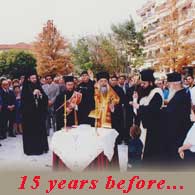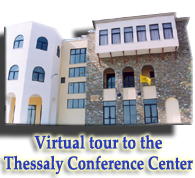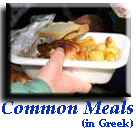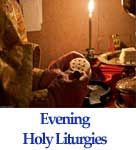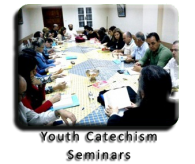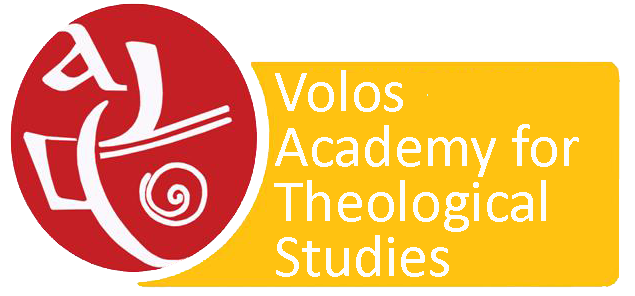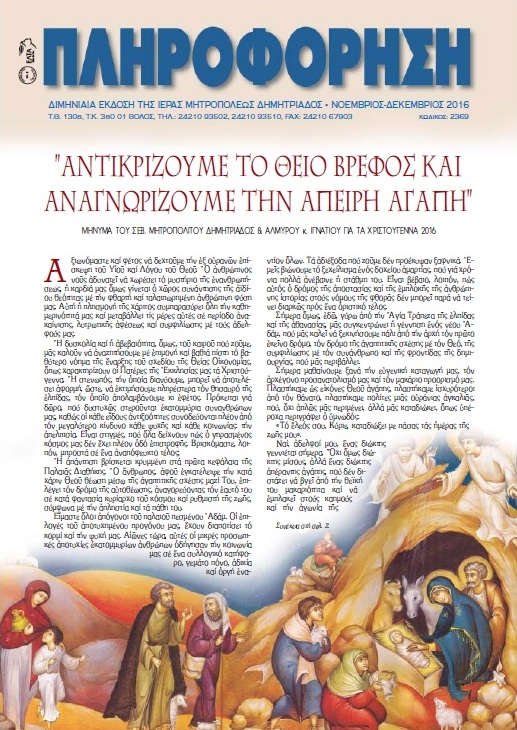Mount Athos - Karoulia, view of the invisible
A glance at the book of Metropolitan Nikolaos of Mesogaia
Mount Athos, The highest place on earth
Monday dawned. A young dentist whom we had met on the boat arrived and persuaded us to go to Karoulia to visit the cell of a holy ascetic, Fr Gabriel, who had fallen asleep in the Lord two years earlier.
We set off for Karoulia at about 9 o'clock in the morning; we were six in all. Ripples stirred once more across my secret inner world. In its purely visual aspect the landscape created in me a profound sense of awe simply to behold. No, I did not want to remain human. I was drawn by the thought of people who experience heaven and who live in an angelic state; it seemed to me the only truth. Everything else was not less or more true or a lesser or greater falsehood. It was a huge lie, an incredible deception and unforgivable delusion. In those places where the world is renounced, the living and vital truth shines through in all its allure and magnificence. We had reached the crucial point. The gradient was about 75 80 degrees. There suspended and clinging to the rock was the rectangular-shaped eyrie of that heavenly person. A monk's cloth cap and a tattered habit were the last firm evidence that this inhuman dwelling was once the home of a man, that its heroic inhabitant was in the end still a human being.
I soon realized that the intensity and rhythm of my heartbeat had increased. It was not the height that dizzied me, nor the sense of danger I felt at my every step. It was the thought of that man. My wonder surpassed the limits of my mental endurance. I looked at this threadbare garment and I venerated it. So also were his dreams, his life and his nature tom to shreds and did he hang them on the nail of divine hope. I thought how he had lived and my eyes filled with tears. I thought how he lives and I prayed, '0 holy one, pray to God for me. '
Just below us, about 100 metres down, was another hermitage. Someone lived there: we could see him he had emerged from his hiding place. Scattered to the left and right were a few other buildings and ruins. I suddenly felt the intense desire to see them. We all decided to go.
We did not know the way exactly. But from the hermitage of Fr Gabriel we could make out a somewhat easier-looking route and we set off. On the way we met three others who had not made it. To our right we caught sight of some chains. We imagined that this must be 'Karoulia thoroughfare'. And indeed, slipping along amongst the big stones and prickly pears and holding tightly on to the chains that were attached to the rocks, we came to a relatively level point from where we could go in three directions. This was their ... Picadilly Circus.
First of all we went to Fr Seraphim, the Russian. He looked at us with the innocent eyes of a tame wild beast eyes that were rarely used: these people begin to see when they have their eyes closed. The sea was not visible from his cell. It was surrounded on all sides by red rocks in the shape of the Greek letter pi. The rock formation created a natural cave and a level space not more than fifteen square metres in area. Ascetics of old had turned this into a hermitage. The cave served as a chapel and the area in front was the cell, for sleeping, cooking and receiving guests. It was relatively dirty and untidy. It was full of icons that were mostly Russian. He did not have any refreshment to offer us. There were nine of us and we only just fitted into the 'available' space. That was what he had to offer. As you came out of the hut, the only escape was the sky. It was closed in on all sides by the rocks. To the north was a remarkable rock configuration of an upright oval boulder with an opening in the centre. I asked the monk if I could take a photograph of him standing in front of it.
'Me ruin photo,' he objected.
I pleaded with him and he gave in. The photograph was not ruined: if it revealed something of the life of a heroic ascetic, it said much about the superficiality of a naive pilgrim. To the right, looking towards the sea, we could see a small hut built onto the sheer rock face. What was strange was that there was also a small courtyard with an almond tree. The problem was the approach: it was really quite dangerous. For about fifty metres one had to tread on particular rocks that were just wide enough to get a foothold. That was where Fr Arsenios the book-binder lived. He could not have been more than fifty years old. He was unsmiling, curt and a little abrupt, and not one to exchange the usual pleasantries. We went to see him three at a time. There was not room for any more than that. He described his work to us. Then, without saying anything, he gave us to understand that we should be on our way, and so we set off in the direction of the main part of Karoulia.
There was a twinned hut, rusty red in colour, which had been built in the recess of a sheer rock face, about twenty metres above the sea. From here a basket would be lowered on a pulley and fishermen would place dried rusks or whatever else they had for the ascetics, receiving in return items of their handiwork. This was the famous karouli (or pulley) from which the whole area had acquired its name. It was where Fr Pachomios lived. One of our company had a camera hanging over his shoulder. Fr Pachomios told him in no uncertain terms that he must not use it. He was visibly upset at the presence of a boat full of women tourists that had come quite close to shore. The tourist guide was describing through the microphone, 'the majesty of these heroes of the spirit who have renounced the vanity of worldly things and who are granted unique experiences and rare visions'. Certainly there could not be greater sacrilege than this in Karoulia than the ostentatious pompousness of this harsh and rough voice booming out the most vacuous and ridiculous things one could imagine. Fortunately, the vessel left quickly.
Fr Pachomios spoke briefly and frankly, mostly about the Orthodox faith and ecumenism. He was solemn, and there was no superfluity to his speech, bearing and being. His clothes were in rags. There was just enough to support life in his surroundings. It was movingly bare, and everything was old and broken: here was poverty and material decay at its height. He went to offer us something but all he had was six raisins, and we were nine. He put them onto the 1id of a jar his tray. Three of us did not get one and were given water instead. He had some rainwater in a bucket that he gave us to drink. At first we refused as we would have left him without. But he insisted. A jar served as a glass the same for everyone. Those who had had a raisin took one sip, the others took two. We did not want to drink up all the water for here it was of very great value. We wanted to know what handiwork he produced, and he showed us three wooden combs and a few paper knives. We asked how much they were but he did not know. We took them and put down two hundred drachmas. He objected: it seemed too much. Now it was our turn to insist, and he humbly acquiesced. We asked for his blessing and left.
Upon leaving his hermitage, we had to go through eastern Karoulia, which was more accessible. Here were the hermitages we had seen on the way up to the Danielaioi Brotherhood from Katounakia landing-stage. The approach was extremely dangerous. As soon as we left Fr Pachomios's we found two wooden ladders that were nailed to the cliff at an angle of about 60 degrees. At this point the rock formed a natural protrusion that was about half a metre wide, to which the ladders were attached with thick strips of metal that also served as steps. To the left of the rock, running alongside the ladder and about a metre above it were some thick chains for handles. To the right was the sea a drop of about thirty metres.
One by one we very carefully crossed this very peculiar path, the 'highway' of Karoulia. It must be the only one of its kind. The ladder ran for about thirty metres, after which it became a more normal path, which led straight into a natural cave full of skeletons, skulls and bones. It was a fearful sight, but also a relief: it is better to see the skulls of others than to imagine your own. I had literally been scared out of my wits. The bones must have been those of former ascetics.
After a few minutes we found ourselves outside a hut that was fairly conventional in comparison with the others. We knocked apprehensively on the door and waited a little while. Steps could be heard. The door opened and an unusual figure emerged. His hair hung loose about his shoulders. His eyes were shining, reddish and sunken. A real skeleton with protruding cheekbones, his teeth were eaten up by disuse. Open to the throat, his habit was tied round his waist with a piece of rope, and hung off his dried-out body. The life of St Eusebius came to mind: 'his belt could not be supported around his waist for even his belly muscles had been consumed. ' He looked quite dirty and he reacted with a certain degree of awkwardness. We did not know what to do or say. He made it easier for us:
'Are you Orthodox or new-calendarists?'(1)
The oldest person in our party answered hastily:
''Orthodo ...'' and faltered. He had suddenly realized what was afoot. Another awkward silence followed.
A torrent of anti-ecumenical arguments, the proclamation of dangers and exhortations to awakening and struggle ensued. We listened with heads bowed. Fortunately, we were not required to say anything: we were not called upon to do so, nor were we given the chance. We thanked him and left. It was Fr Bartholomew. Most probably the teacher of zealotism(2) in Karoulia.
As we were leaving, a very sweet-natured but rather naive monk, Fr Mark, who had previously suggested we should go to see Fr Bartholomew, invited us into his hermitage. It was late, and so he brought some Turkish delight outside to us small pieces that were as old as the hills and as hard as pebbles. Instead of icing sugar they must have been covered in dust and instead of the usual flavour they tasted of earth. Yet it was offered with great love and simplicity, Perhaps that was why it tasted so good.
----------------------------------
1.Old Calendarists still follow the 'old' Julian calendar, not the 'new' Gregorian calendar that was adopted by the Orthodox Church of Greece in 1924, and they are not in communion with the rest of Athos, the Church of Greece or the Patriarchate of Constantinople. A confusion arises, since Athos follows the old calendar, but it is not Old Calendarist.
2. Zealots are Old Calendarists who do not commemorate the name of the Ecumenical Patriarch of Constantinople in services. They are also usually much more conservative and narrow in their outlook.










